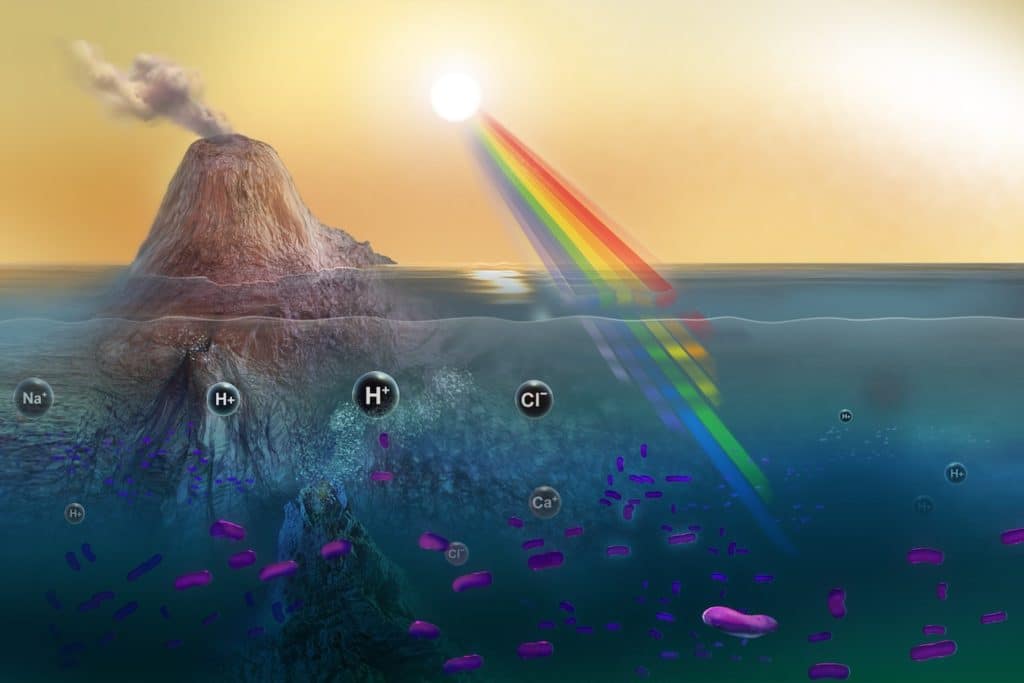‘Early Earth is an alien environment compared to our world today’
To unlock mysteries of the future, often the key comes from the past. That could be the case in the search for extraterrestrial life forms, as a recent study suggests ancient microbes on Earth could help scientists find life outside our planet.
A team of researchers from the University of California Riverside and University of Wisconsin-Madison used light-capturing proteins in living microbes to reconstruct what life was like for Earth’s earliest organisms. They believe this could help recognize signs of life on other planets, since their atmospheres may closely resemble our pre-oxygen planet.
In ancient Earth, bacteria and single-celled organisms called archaea lived on a primarily oceanic planet without an ozone layer to protect them from the sun’s radiation. These bacteria and organisms evolved rhodopsins, which are “proteins with the ability to turn sunlight into energy, using them to power cellular processes.”
“On early Earth, energy may have been very scarce. Bacteria and archaea figured out how to use the plentiful energy from the sun without the complex biomolecules required for photosynthesis,” says University of California Riverside astrobiologist Edward Schwieterman, study co-author, in a statement.
Scientists say rhodopsins are linked to “rods and cones in human eyes that enable us to distinguish between light and dark and see colors.” Rhodopsins are also distributed among modern organisms and environments like salter ponds, which are very colorful.
In the study, researchers analyzed rhodopsin protein sequences and tracked how they evolved over time by using machine learning. Creating a family tree, researchers reconstructed rhodopsins from 2.5 to 4 billion years ago and the conditions they likely faced.
“Life as we know it is as much an expression of the conditions on our planet as it is of life itself. We resurrected ancient DNA sequences of one molecule, and it allowed us to link to the biology and environment of the past,” says University of Wisconsin astrobiologist and study lead Betel Kacar.
“It’s like taking the DNA of many grandchildren to reproduce the DNA of their grandparents. Only, it’s not grandparents, but tiny things that lived billions of years ago, all over the world,” adds Schwieterman.
According to researchers, ancient rhodopsins absorbed mainly blue and green light while modern rhodopsins absorb blue, green, yellow and orange light. Scientists believe that billions of years ago, microbes lived many meters down in the water column to shield themselves from the surface’s intense UVB radiation since ancient Earth didn’t have an ozone layer.
The study reveals ancient rhodopsins primary absorbed blue and green light since those colors best penetrates water.
“This could be the best combination of being shielded and still being able to absorb light for energy,” says Schwieterman.
Rhodopsins began to evolve more than 2 billion years ago during the Great Oxidation Event. With a rise of oxygen and ozone in the atmosphere, rhodopsins evolved to additional colors of light.
Today, rhodopsins absorb colors of light that chlorophyll pigments in plants cannot. According to the media release, “though they represent completely unrelated and independent light capture mechanisms, they absorb complementary areas of the spectrum.”
“This suggests co-evolution, in that one group of organisms is exploiting light not absorbed by the other,” explains Schwieterman. “This could have been because rhodopsins developed first and screened out the green light, so chlorophylls later developed to absorb the rest. Or it could have happened the other way around.”
By using synthetic biology techniques, researchers are hoping to resurrect model rhodopsins in a lab.
“We engineer the ancient DNA inside modern genomes and reprogram the bugs to behave how we believe they did millions of years ago. Rhodopsin is a great candidate for laboratory time-travel studies,” says Kacar.
Researchers are hoping what they learned about early Earth organisms could be used to search for signs of life on other planets.
“Early Earth is an alien environment compared to our world today. Understanding how organisms have changed with time and in different environments is going to teach us crucial things about how to search for and recognize life elsewhere,” says Schwieterman.
The study was published in the journal Molecular Biology and Evolution.












-392x250.png)